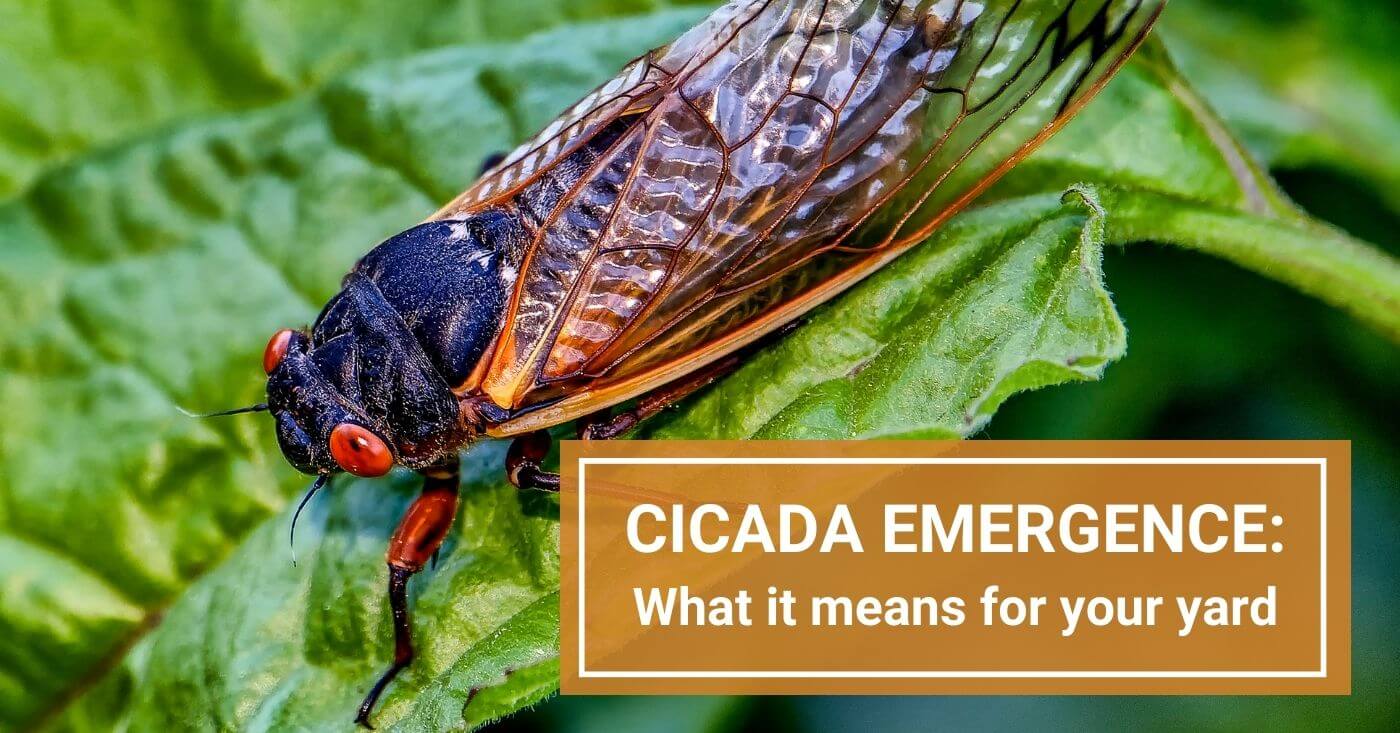This spring, millions of cicadas will emerge from the ground and we’ll hear the telltale whine of their calls for a few weeks. This emergence includes adult cicadas from two periodical broods, one that emerges every 17 years, and one that emerges every 13. This is a rare occurrence, happening once every 221 years.

The above map, courtesy of Cicada Safari (https://cicadasafari.org/) depicts the range of the two emerging cicada broods. Brood XIII is shown by blue dots, and Brood XIX is shown with red dots.
There’s no need to be overly worried about this emergence event, despite many headlines suggesting otherwise. The two broods, known as Brood XIX, the 13-year brood, and Brood XIII, the 17-year cicadas have different ranges where they are set to emerge, and there is a very small area of potential overlap occurring in central Illinois. Brood XIX is also known as the Great Southern Brood, and their range stretches across southern Illinois, Missouri, Arkansas, Tennessee, Alabama, Georgia, and the Carolinas. Brood XIII is mostly contained in northern Illinois, eastern Iowa, and southern Wisconsin.
Discussed below, cicadas pose no threat to gardens and crops, and only minimal threat to unhealthy trees or shrubs.
What is a Brood and Why Do They Appear Periodically?
There are two types of cicadas: ones that appear annually, and ones that appear periodically. Annual cicadas are smaller in number and will emerge from the ground yearly to mate and complete their life cycle. Periodical ones emerge at once in large groups called broods.
Periodical cicada life spans have fascinated scientists for years. These cicadas spend the vast majority of their lives living underground in their nymph forms, feeding off tree sap. They only emerge in their adult forms to breed and lay eggs. Once the eggs hatch, the nymphs will fall to the soil and burrow into it, where they feed and stay for years.
When will the Broods Arrive?
No one knows the exact date that they will appear, but in general periodical cicadas start to emerge from the soil when temperatures are above 64 degrees. Typically, this falls between the first few weeks of May. They will only be above ground to mate and lay their eggs, which lasts for only a few weeks, afterwards they will die. Because of their short lifespan once they emerge, we anticipate these cicadas will be gone by early June.
What This Means for You and Your Garden
First, we want to stress that cicadas are no threat to humans or our pets. They do not bite or sting, nor are they venomous in any way. Your dog can eat a few and it will cause no health concerns. If they eat a lot of cicadas, however, it could cause an upset tummy.
Cicadas are even beneficial to the environment. They are a great food source for many birds, mammals, insects, reptiles and other predators. Cicadas also help aerate grass, and even provide essential nutrients to the soil when they decompose.
Now, we know you’re curious about your plant life! Cicadas pose no threat to any garden or crop. This means that your fruits and vegetables, herbs, annuals, and perennials are all safe. Cicadas don’t feed on leafy green leaves, buds, flowers, etc.
The only threat they potentially pose is to compromised trees and larger shrubs. Female cicadas will cut tiny slits in bark to lay their eggs. Healthy trees are not harmed by this. Trees that are weakened by disease or potentially young trees could show some damage, but it’s very rare for them to kill an at-risk tree.
How to Protect At-Risk Trees
As mentioned above, healthy trees will be just fine. But, if you’d like to exercise caution to protect trees that may be more vulnerable to cicada damage, we recommend wrapping their trunks in netting. Check your local hardware store or garden center for the best kind for your tree or shrub variety.
Do not use pesticides or insecticides. They are ineffective against periodical cicadas, and could harm other beneficial pollinators such as birds, bees, and butterflies.
We also advocate for the general health of your trees and shrubs. To ensure they are at their hardiest when cicadas arrive, be sure to mulch them well this spring. If you’re not sure how much mulch or what kind to use, check out our mulching guide for more information. Practice good watering techniques, especially for newer plantings, to allow them time to establish their roots.
To Sum It Up
Cicadas might be a nuisance to our ears for their few weeks of life, but they aren’t harmful or dangerous to crops, gardens, annuals or perennials. They only pose a minor risk to compromised trees, and can be easily kept away with netting around trunks.
Feel free to contact us with any questions you may have. We’re here to help!
As Wisconsin's oldest and largest plant nursery, with over 125 years of experience, we're dedicated to helping people beautify their yards. Our services include our online plant store, landscaping, hardscaping, delivery and installation, wholesale, and two garden centers in Wisconsin!





